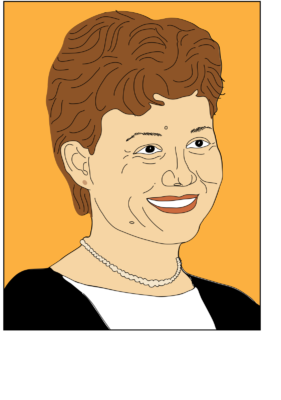
Welcome to the first post in a new series being hosted on the TS blog! This series “Influential women of Tectonics and Structural Geology” is aimed at highlighting women who have had a key contribution to the field of tectonics and/or structural geology. Patience’s contribution to the field of faults changed the way geologists looked at faults. Her work continues to be used to analyse faults today.
On a cold January-day in 1964, where the temperature would barely rise above 4 degrees °C, Patience Anne Cowie was born. The cold did not seem to bother her that much. In fact, her friends and colleagues rather described her as a warm and open person. While growing up, her father, who developed revolutionary engineering projects, was the one that sparked her broad interest to want to understand the natural world.
Patience’s curiosity in Geology arose during her undergraduate studies at the University of Durham. She participated in many different field studies, which she experienced as if she was ‘wandering through the pages of a beautifully illustrated book – each new trip was a window into a different period of geological time’. During her undergraduate studies, she grew confident about obtaining a PhD degree and she decided to apply for an exciting project at Columbia University.
She secured the PhD position and took on this new adventure. The focus of her doctoral work, conducted at the Lamont-Doherty Earth Observatory, was ‘The Growth of Faults’. The broad interest in geological phenomena that Patience had since her childhood and which she could fully dive into during her PhD, was extended with a curiosity for programming. She was convinced that numerical modelling would be an added benefit to her research, and so it happened that she taught herself to code. This allowed her to include numerical modelling techniques, using the numerical code CASCADE, in her research later in her career to better understand the dynamics of faults. This multi-disciplinary approach proved very useful as she was now able to investigate the interaction between fault activity, sedimentation and surface processes.
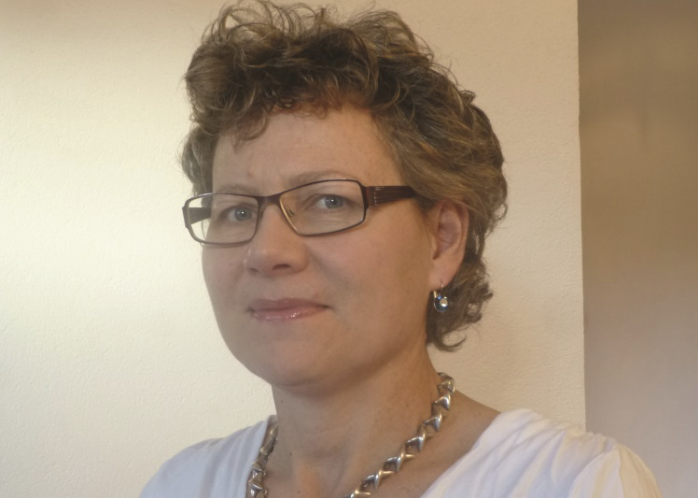
Patience Cowie at the Royal society
After she graduated, she spent one year in Nice, southern France, as a Postdoc. She used this time to develop the fault model that described that fault displacement in nature correlates strongly to the total length of the fault, a revolutionary step in structural geology. When an earthquake repeatedly activates a fault, the fault will displace every time. By adding up all these different displacements we eventually find the length of the fault. This realization of hers was ground-shaking and changed the way we looked at faults and still helps us with our fault-analysis today.
Faults remained central to Patience’s research throughout her career. She moved to Edinburgh in 1993 with a NERC grant, and in 1994 she received a Royal Society Fellowship. For her research, she conducted many fieldwork expeditions all over the planet, together with colleagues and students to elucidate the behavior of faults. She went from the windy close-to-home corners of East Lothian in southeast Scotland, to the other side of the channel, to the Apennines in Italy, to mainland Greece, and across the Atlantic to Utah, USA to investigate the deformation band faults in the Navajo Sandstone. Patience loved these expeditions. She would always be the first one awake, making coffee noisily on purpose to wake the other geologists. She would wonder out loud why they weren’t awake already and ready to go? What on Earth was more exciting than faults?
In 1995, Patience stole the heart of a tall Dutchman named Leo, a geologist from The Netherlands. During those days, the winters were still cold. Luckily for Leo, the cold was not something that would hold Patience back and so Leo took the opportunity to take her ice-skating. That time though, the skates did not fit her very well. Her feet were sore but she was persistent and embraced ice-skating as a new hobby for the rest of her life. Despite sometimes harsh conditions, Patience loved the outdoors. She would sleep in drizzling rain and would set up camp in the heaviest storms, even if that meant her tent would blow away, which once happened.
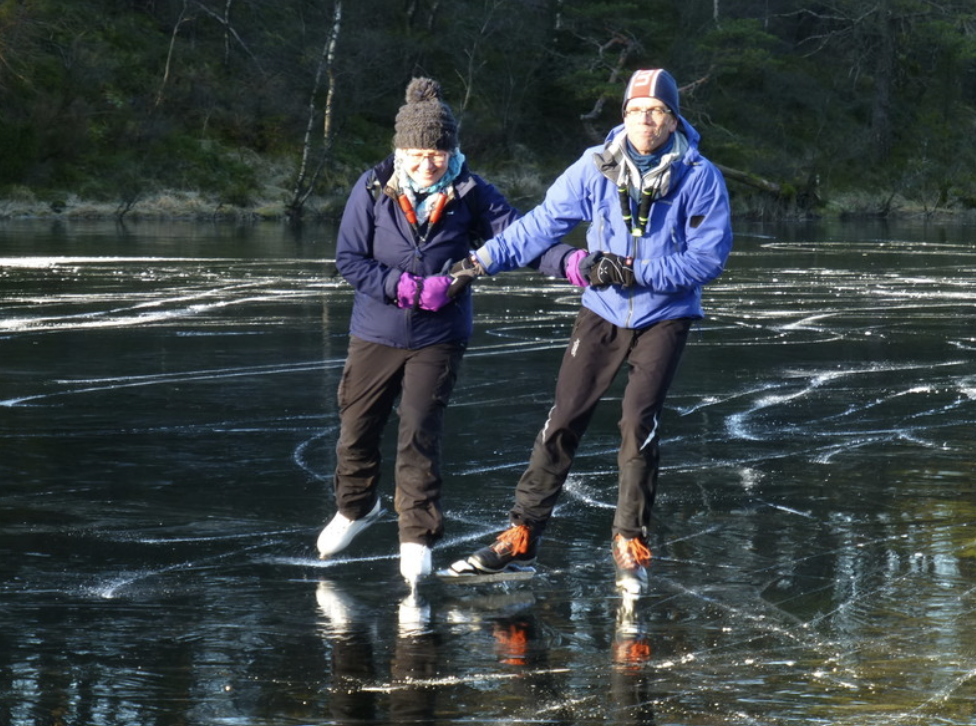
Patience and Leo ice skating
Apart from her love for the outdoors and science, Patience also wanted a family. She and Leo had their first daughter, Esther, in 1999, when Patience was 35 years old. While it is not easy for a female scientist to have a family life, Patience successfully negotiated a permanent position at the University of Edinburgh in 2002, just before she gave birth to her second daughter Saskia. Leo took a 10-year career-break to complete a new study and take care of the family to support Patience’s career as a top-scientist. Together, they made it work.
In 2008, Patience became Professor at the University of Edinburgh, a position she had worked hard for and she was ready to take up. That year, Patience received bad news. She was diagnosed with breast cancer. It was a tough diagnosis, but she did not give up her Professor title nor her passion for science. In 2011, she decided to once more move to another country and become a Professor in Geodynamics at the University of Bergen in Norway, which would be her last position. With her determined spirit she mastered her illness for twelve years, until her passing in April 2020. She remained hopeful that ‘they would maybe find a cure in her lifetime’.
In 2016 she received the prestigious Coke-medal of The Geological Society for all her work on, you guessed it: faults. During the medal ceremony, the president of The Geological Society described her as ‘an inspirational and far-sighted geoscientist, who has revolutionized our understanding of the growth and interaction of faults.’ His opinion is shared by Patience’s many colleagues and friends who remember her as courageous, open and honest with a no-nonsense attitude. She has been described as an insightful scientist, a seeker of truth and an encouraging mentor. Patience was known for her brilliant mind, her never-ending energy to understand the natural world and her good sense of humor.
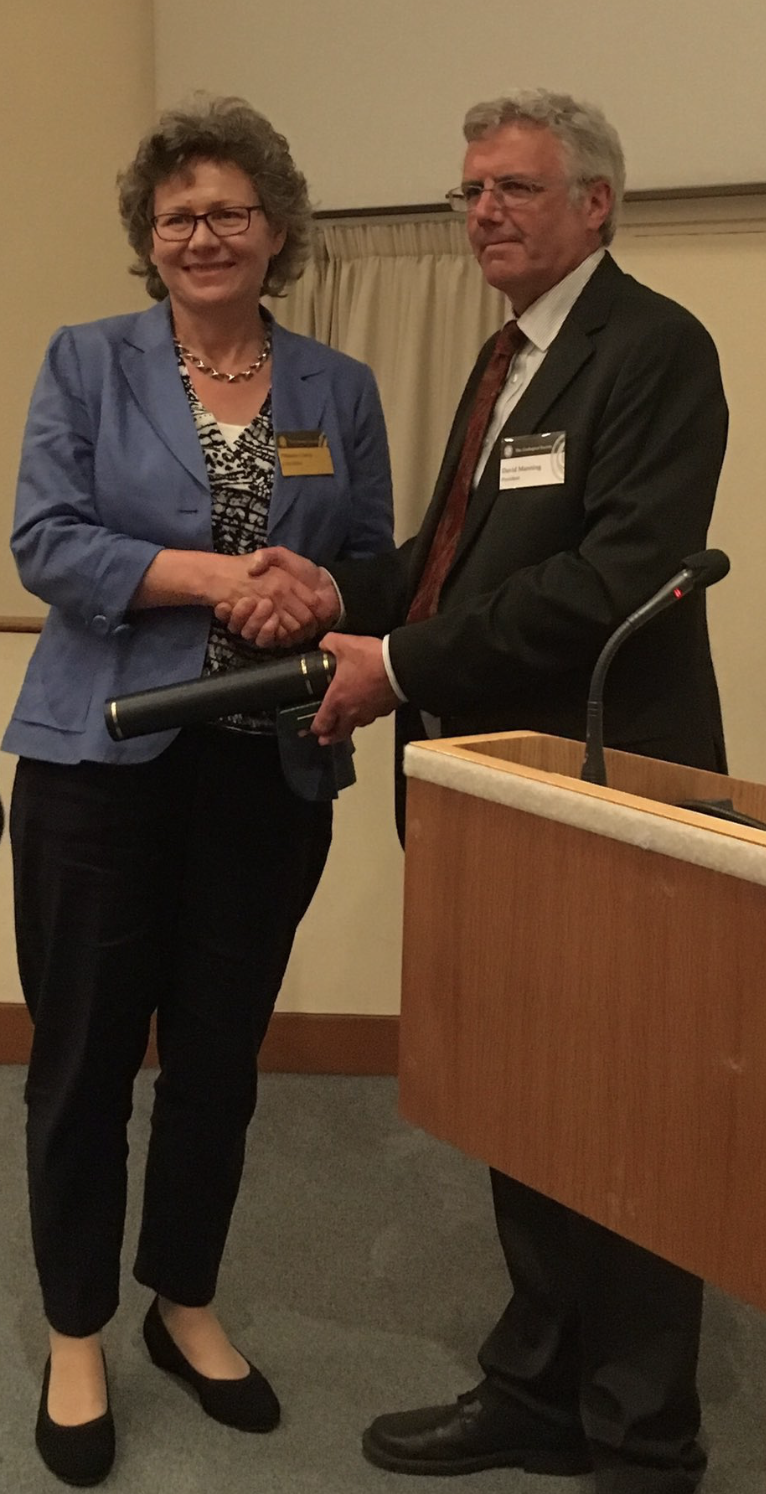
Patience receiving the Coke medal
As one of her former PhD students would say: Patience was a Geology Superhero.
Written by Anouk Beniest
Edited by Derya Gürer and Hannah Davies
Most cited/important work:
Cowie, P.A., Scholz, C.H., 1992. Physical explanation for displacement-length relationship of faults using a post-yield fracture mechanics model. Journal of Structural Geology, 14, 1133-1148.
Cowie, P.A., Scholz, C.H., 1992. Displacement-length scaling relationship of faults: data synthesis and discussion. Journal of Structural Geology, 14, 1149-1156.
Cowie, P.A., Gupta, S., Drawers, N.H., 2008. Implications of fault array evolution for synrift depocentre development: insights from a numerical fault growth model. Basin Research, 12, 241-261.


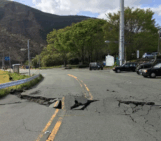

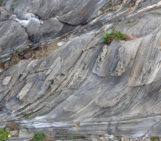
M.O
Thank you for this article. It is so beautiful and so important to know this person because a geologist is their work.
Anita Torabi
That was an interesting article about Patience Cowie, thank you:)
As a female geologist, I always admired her courage and acheivements. She was and will be the superhero of all female geologists. Hope that more women take her path and choose to do something for science that would satisfy their hearts.
Akshay jain
Wonderful article is uggest everyone please read it because many people don’t know about geology as one of the best subject in the world,but i think geologist do a wonderful job